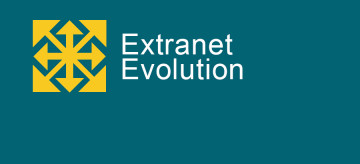- Advertising
- Bare Metal
- Bare Metal Cloud
- Benchmarks
- Big Data Benchmarks
- Big Data Experts Interviews
- Big Data Technologies
- Big Data Use Cases
- Big Data Week
- Cloud
- Data Lake as a Service
- Databases
- Dedicated Servers
- Disaster Recovery
- Features
- Fun
- GoTech World
- Hadoop
- Healthcare
- Industry Standards
- Insurance
- Linux
- News
- NoSQL
- Online Retail
- People of Bigstep
- Performance for Big Data Apps
- Press
- Press Corner
- Security
- Tech Trends
- Tutorial
- What is Big Data
Without Data Visualization, Big Data is Just a Big Mess
Sometimes you have to see it to believe it. In the world of big data, sometimes you have to see it to understand it. True data insight comes from turning overwhelming lines of raw material into comprehensive business analytics. Collating data and extrapolating it into a meaningful format can bridge gaps in understanding across your organization.

Sometimes you have to see it to believe it. In the world of big data, sometimes you have to see it to understand it. True data insight comes from turning overwhelming lines of raw material into comprehensive business analytics. Collating data and extrapolating it into a meaningful format can bridge gaps in understanding across your organization.
Turning Messy Raw Data into Meaningful Insights
High performance cloud computing has enabled our entry into the era of big data analytics in every industry. The biggest dilemma for IT analysts today is how to make sense of all the information we’ve collected. Now that we’re able to capture the most minute human activity details via the IoT, how are we able to take that data and make it actionable?
Nowhere has an industry struggled more with unorganized big data than the American healthcare system. Federal legislation in 2009 forced hospitals and health systems to begin building a nationwide network of electronic health records. As the data began coming in, CMIOs began publicly asking what to do with all the uncoordinated data.

Today, hospitals have just begun scratching at the surface of the clinical and claims data they’ve collected. The most recent trend making the news in healthcare is population health, a method of harnessing data to improve health outcomes and lower costs. While the movement is in its infancy, it is a seismic industry shift from managing disease to managing wellness. The model has been applied most frequently to chronic disease modalities such as diabetes; big data has been leveraged to segment diabetics for education intended to reduce the incidents of chronic care. Data visualization charts help these patients understand how their past behaviors impact their health outcomes.
An entirely new subset of the healthcare industry has formed with the mission of taking raw data and turning it into meaningful insight. Apxio and IBM’s Watson Health are just two examples that combine the power of cloud performance monitoring and analytics to help health systems act on the data they’ve collected.
These organizations understand that piles of big data without analytics just take up space in the high performance cloud.
What’s The Sound of Big Data Analytics?
Data visualization takes raw numbers and turns them into business insight. Creating images from data allows you to begin to see patterns that could change the course of a business. It also helps make raw data more accessible to audiences, something increasingly valuable whether you’re a government entity embracing transparency or a non-profit seeking funding and support from the masses.
Data without understanding is just data with no connection to the real world. It brings to mind the tree falling in the empty forest - without the ability to turn data into readable fields of information that can be shared, the data becomes basically useless.
Bigstep is a high performance cloud-computing provider that helps companies harness the power of big data. Find out how we can help you turn data into meaningful insights with a live demo of our service.
Readers also enjoyed:

4 Powerful Ways Manufacturers are Putting Big Data to Extraordinarily Good Use



Leave a Reply
Your email address will not be published.